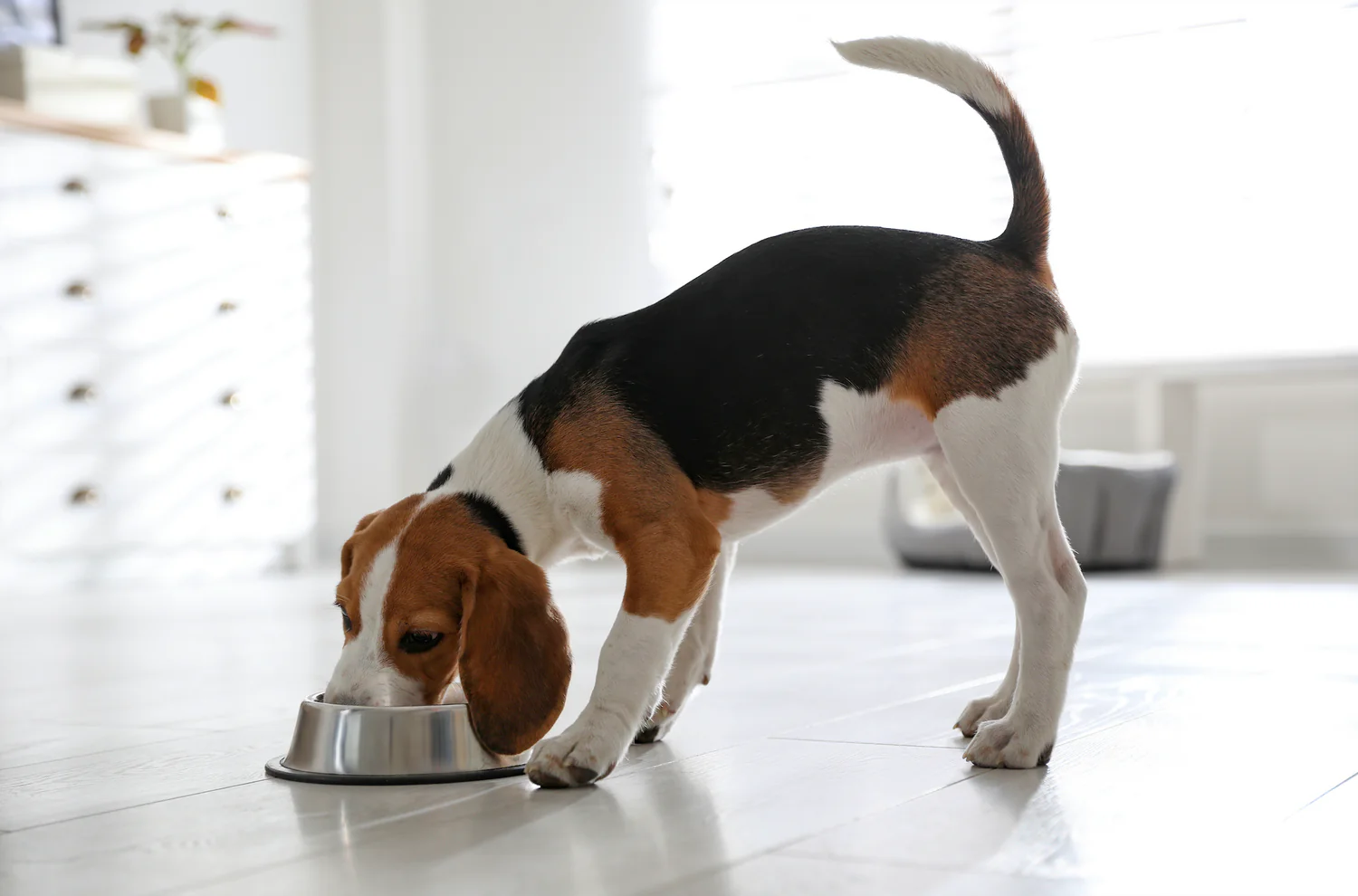Meal toppers can add moisture, nutrition, and irresistible flavor to your pet’s regular kibble! Learn about the different types of toppers available and how to balance their servings to keep your pet’s meals healthy.
Fries are better with ketchup, and pancakes call for a little syrup. But what about your pet’s kibble?
If your cat or dog has been eating the same kibble for a while, they might not be as excited about it as they used to be. That’s where meal toppers come in! Just like adding salsa to your nachos, meal toppers bring flavor, freshness, and new ingredients to a basic meal.
Here’s what you need to know about the various types of meal toppers and how to serve them responsibly so your pet doesn’t suddenly get an unexpected boost in their daily calorie intake.
Benefits of Meal Toppers
These tasty add-ons can actually be good for your pet too! Depending on the type of meal topper you choose, they can offer several benefits for your furry friend:
- Added moisture and increased hydration
- Fresh or raw ingredients
- Boosted protein
- Fresh fruits and vegetables
- Added nutritional variety
- Increased vitamins and minerals
- Savory flavor to entice picky eaters or pets with low appetite
- A special treat that will have your pet licking their chops—and you!
Types of Meal Toppers
There are plenty of options when it comes to topping your cat or dog’s dinner! You can go for a dedicated meal topper or mix things up by adding different types of pet food. Knowing what’s available will help you find the best options for your pet.
Dry Meal Toppers
You can find air-dried, freeze-dried, and powdered toppers designed to elevate any pet meal. These toppers often provide the benefits of raw ingredients without requiring refrigeration, making them an easy and convenient feeding option. However, they don’t add any moisture to your pet’s kibble, so make sure their water bowl is always full and fresh!
Wet Meal Toppers
These moist, meaty toppers usually come in small pouches for easy serving. You can choose a savory bone broth that adds flavor and moisture (and is gentle on sensitive stomachs) or opt for a formula with more nutritional value, such as a dog food topper rich in meat and vegetables with a moisture-rich gravy.
Canned Wet Food
You don’t always need a specially formulated meal topper to get similar benefits. If you have an extra can or two of wet dog food or cat food in your pantry, try adding some on top of their kibble to add hearty meat and extra moisture.
Fresh Pet Food
Consider picking up a package of raw food from your local pet store or opting for a shelf-stable fresh pet food to get the same benefits without the short shelf life. Feeding a fully raw or fresh diet can be expensive, but spreading it out across multiple meals allows you to get those fresh food benefits without breaking the bank.
Pet Treats
That’s right—your pet’s favorite treats can also serve as meal toppers to make dinner more exciting! Choose a healthy dog treat or cat treat they love (because you wouldn’t eat potato chips with every meal) and mix some into their daily food to encourage them to eat their kibble along with their treats. Pro tip: try adding a squeeze of a wet treat for moisture and extra flavor!
You can choose one favorite meal topper, rotate a few for variety, or mix and match multiple toppers to get all the benefits you want for your pet. Remember, no topper can make up for a low-quality kibble, so be sure you’re starting with a nutritionally balanced kibble like these filler-free, grain-free dog foods and cat foods that are loaded with prebiotics, probiotics, and a scientifically backed selection of vitamins and minerals.
How to Serve a Meal Topper
Adding a meal topper to your pet’s food should be simple, but you’ll need to do a little math first to ensure you’re not overfeeding your dog or cat. Each topper has its own calorie count, and you need to account for that to avoid unexpected weight gain.
Every adult dog and cat has an estimated calorie count that they should consume daily to maintain a healthy condition. You can estimate this based on your pet’s size or consult your vet for a more accurate assessment of their needs. (This is especially important if your pet is overweight, as your vet can guide you toward healthy, gradual weight loss and help balance their diet.)
Once you know your pet’s daily calorie needs, divide that number by the number of meals they eat each day—typically two. Then, determine the right proportion of kibble to meal topper to reach the total number of calories they should be eating in each meal. Here’s a basic formula:
calories in 1 serving of kibble + calories in 1 serving of meal topper = total recommended calories for 1 meal
Once you’ve figured that out, you’ll know exactly how much food to serve your dog or cat and how much topper to add. This formula works for pets of any size, as you’ll need to adjust the amount of food differently for a small dog compared to a large breed.
A little planning will pay off big time when you serve your pet their enhanced dinner and see just how excited they are! Get ready for wagging tails and happy headbutts, pet lovers.

